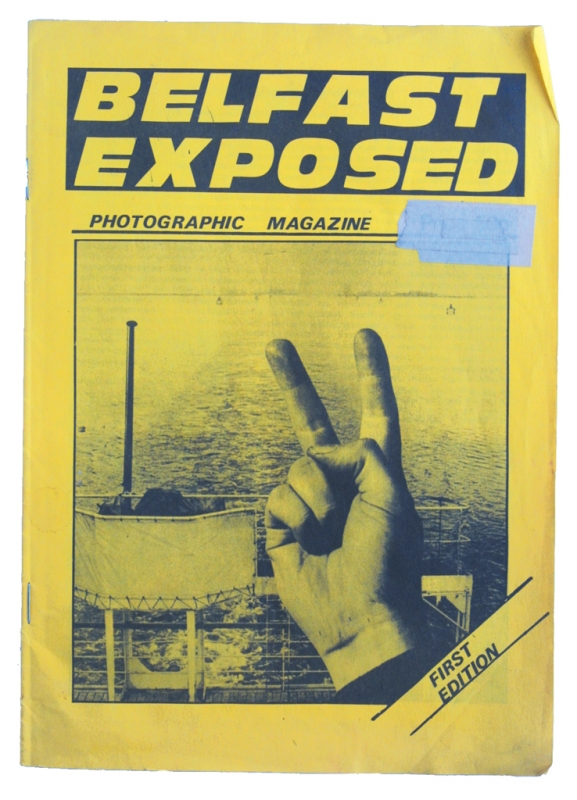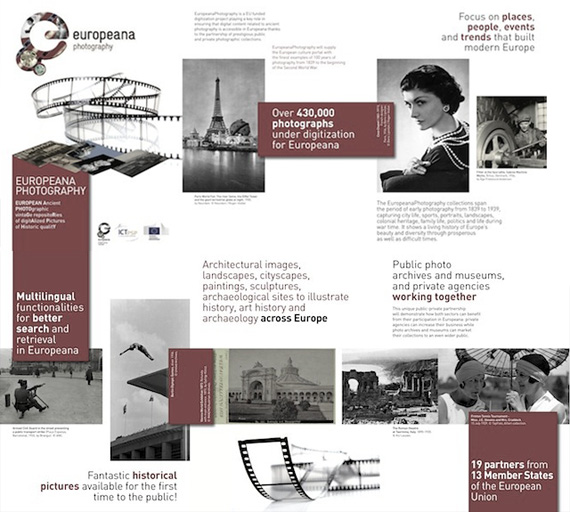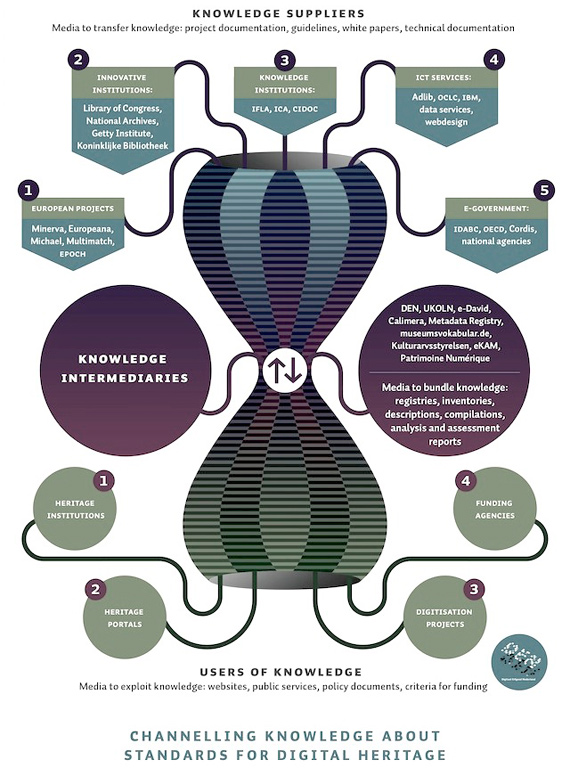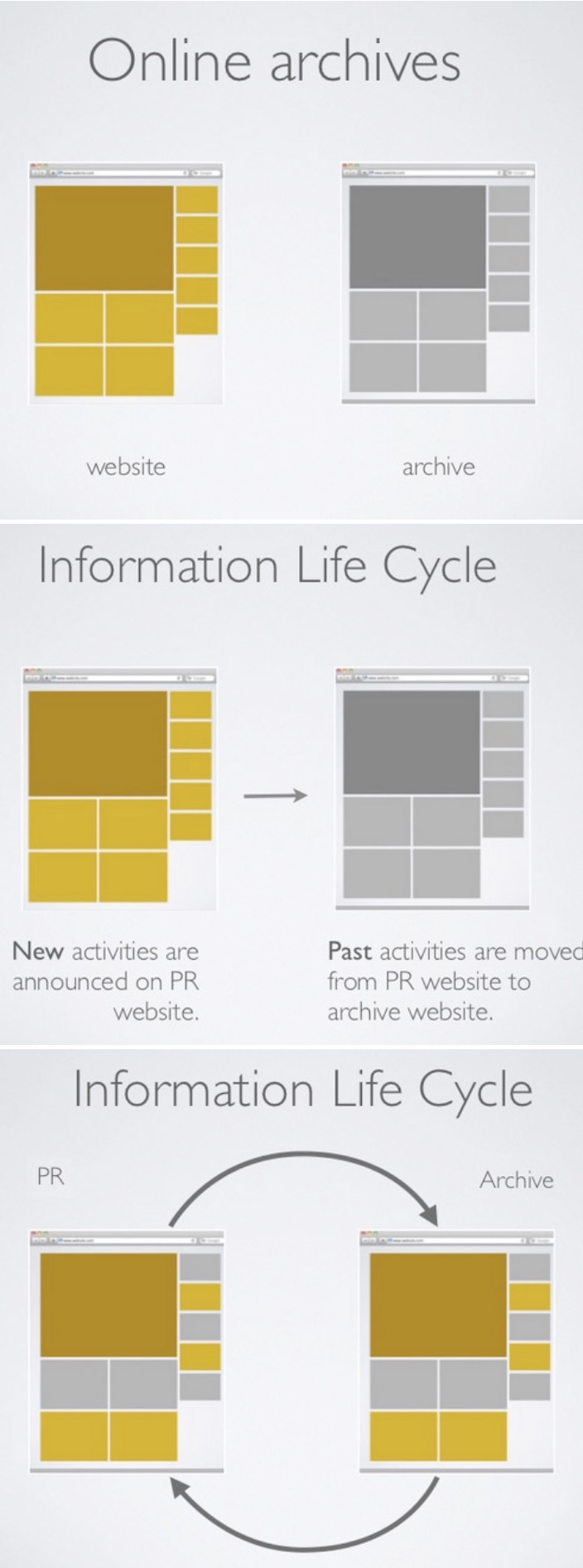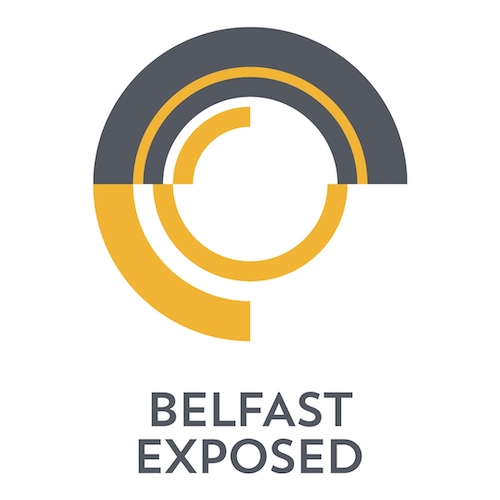
Belfast Exposed photography archive
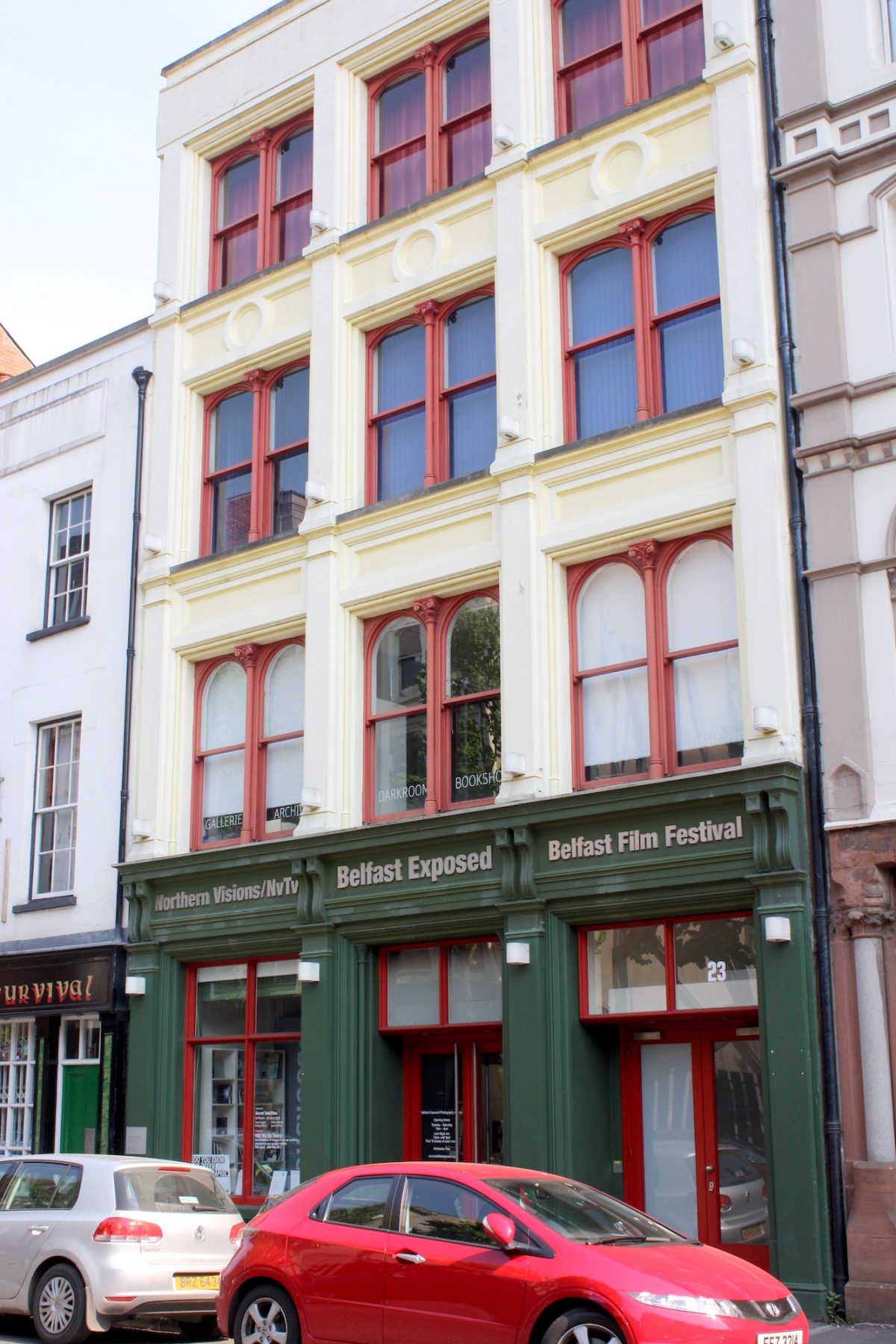
Nearly 40 years ago, following the intense social unrest and trauma of the 1980-1981 Hunger Strikes, teacher, trade unionist and community activist Danny Burke brought together a collective of local photographers to initiate an exhibition of photography reflecting Belfast from the inside. The exhibition was called ‘Belfast Exposed‘ and initially comprised over 200 photographs and slides, documenting daily life in the city from a predominately working-class perspective.
Opening in October 1983 at Conway Mill – on the nationalist side of the Belfast’s main ‘Peace Wall’ – the exhibition attracted interest from all over the city. It later moved to the Bank of Ireland Gallery, Dublin, where Seamus Heaney remarked on the “powerful, democratic feel running through these photographs“, which documented a common experience of unemployment, poor housing and economic deprivation, at once intensified by sectarian conflict and alleviated by the gritty humour of working-class Belfast.
Following the exhibition’s success and attempting to forge solidarities across Belfast’s sectarian divide, Belfast Exposed – now a burgeoning visual arts organisation – represented the work of photographers from a range of backgrounds, while recruiting a cross community steering committee and bringing exhibitions to venues in all areas of the city. Over the following years, new photographic practices began to emerge in Northern Ireland, providing critical tools for documenting and reimagining a rapidly changing region. However, in many ways, the approach and aims of the original 1983 exhibitions set the tone for our ethos from that day until the present.
While community experience of conflict remains an important focus of our work, the ongoing challenge is to keep this relevant and accessible for a new generation of audiences and photographers. Since moving to Cathedral Quarter in 2003, Belfast Exposed has engaged with thousands of people every year: photographers, artists, activists, local communities, tourists, students, school children and the general public. Each group has contributed to a substantial portfolio of exhibitions, publications and projects, often informed by questions that resonate with local experience: representation, identity, history, memory, commemoration and attachment to place.
Belfast Exposed
Belfast Exposed is Northern Ireland’s principal gallery of contemporary photography, commissioning, publishing and showing work by artists and photographers from Northern Ireland and across the world.
Located in Belfast City Centre, Belfast Exposed houses four public galleries, exhibiting world-class art that responds to contemporary currents in photography and politics. We specialise in mental health and wellbeing, supporting individuals and communities through our unique ‘Viewpoint’ programme.
BX hold a substantial photographic collection, provide varied photographic training and services and educational packages for schools, and roll out intern and volunteer programmes.
Image Archive
Belfast Exposed Photography maintains a substantial collection of negatives and slides in trust for the community. The collection has been compiled over the past 40 years through contributions from professional and amateur photographers and communities. It represents a valuable historical document recording political, cultural and social change in Northern Ireland over more than 3 decades.
A sample of these can be viewed on this site, with a larger selection available to view without appointment on the digital archive browser in the Belfast Exchange Gallery.
Communities
Belfast Exposed has over 20 years’ experience delivering photographic projects with local communities across Northern Ireland. Whether building new skills or community capacity, we design our projects side by side with community partners to enable creativity and critical thinking, where the camera becomes a tool for driving and documenting change.
Set of questions and issues:

- Where does Belfast Exposed find itself in 10 years time?
- Connection with creative industries. New grants opportunities.
- Belfast City Museum.
- Digitasation of archives. Archival development, policies, personal, funding.
- Outreach projects.
Development proposal
currently under construction
Formal & informal culture.
To design collaborative networking platform for photography professionals and amateurs who reside in Belfast and Northern Ireland.
It would aim to shift the identities of the residents and the archive from the political and religious aspects to positive shared everyday experiences of life in Belfast which are universal to human nature and the hidden beauty of the environment in which they live.
Therefore aiming to generate a more critically reflective language that will help bridge the divide between communities and increase awareness about shared background and lives of the residents of the city.
The foundation of this platform would be the Belfast Exposed archive constituting principles, thus Belfast Exposed will take curatorial responsibility.
Deliver platform for photographers to experience professional growth, which will therefore influence positively on the creative industries in the city, being an ever-growing collection about the city and its many aspects. Giving professional photographers more exposure, thus elevating both their image and image of the city.
On its own will be a visual collection of life in Belfast to which both professional and amateur photographers have contributed. Belfast City Museum*.
Lack of community/resident involvement and exposure: takes engagement and outreach to the different level making community photography more visible by showing the results of their teachings and workshops
Belfast Exposed
“Building on extensive networks of communities and artists, we hope to discover new ways of working based on common values, which join up the rich diversity of our interests.
Staying true to our founding mission, we continue to value photography as a way of challenging clichéd and reductive representation, so that people might better understand and be understood in the world.”
Paul Hamlyn Foundation
“The capability or self-organised approach provides an alternative method of recording human development… it is about people’s capability to do and to be the things they themselves have reason to value….
It enables us to design projects as opportunities for people to build their capability thus helping people help themselves.”
David Richmond. Our Museum.
Inspirations
…The gallery space provided exhibition space both for local community groups and established photographers from within and outside of Belfast.
…Like similar groups the activities of Belfast Exposed are diverse, encapsulating a variety of emphases that reflect the personal interests of the people involved, the needs of the local communities with which they work and the practical restrains of financial prudence.
…The initial idea, to provide an alternative and ‘amateur view’ of life in Belfast, was not merely an attempt to provide a forum for ‘ordinary’ people, whose access to means of visual expression would have been severely limited.
…The aim of Belfast Exposed was therefore twofold: on the one hand, it wanted to show the full extent of life taking place beyond the images provided by the mainstream media and on the other to document the Troubles themselves to a fuller extent…
…Today Belfast Exposed’s object, the city itself, is no longer dominated by an exclusively bipartisan Troubles narrative. Finally the staffing of Belfast Exposed has changed allowing a reorientation of the organisation’s objectives and a reappraisal of its motives. The combination of these factors places a strong Belfast Exposed in the enviable position of being able to create an even more diverse stylistic and thematic portrait of Belfast and discover a future role for community photography in the city.
Martin Bruhns. Issue 33, 2002. Read the full article here.
The origin of Belfast Exposed dates back to 1983 when a group of local photographers came up with the idea for an exhibition to which people from across Belfast were invited to bring their photographs, to provide an ‘amateurs insight into the varying images of Belfast’.
Excerpts from “Belfast Exposed” article from Source Photographic Review
Brendan O’Reilly 1984
…As Karen Downey, the exhibition curator, is quick to point out in the accompanying brochure, it is better understood as a showing of “new art-documentary practices, more often produced for the gallery space and the photo-book than for press and media”. In fact, this specific focus offers much to facilitate re-readings of Northern Irish photography, which has suffered from limited classifications as a trope of photojournalism associated with ‘the troubles’ of fraught media imagery.
…The works at the MAC explore the cacophony of conflict and trauma in a more muted, yet equally potent way. Here, a generation of photographers examines the attendant detrius as a kind of ‘material culture’ of war. Nearly all of the images on show are unpopulated by human beings; the focus instead is on objects, places and spaces that have arisen because of the conflict.
…It’s images like these, given space and breadth in The MAC, that perfectly illustrate what Fionna Barber has called the evolution of a particularly nuanced and reflective “conflict aesthetic” in Northern Irish art. Such images provide respite from the kind of traumatic and sensationalist media images traditionally associated with conflict. That these hushed reflections can be as equally as disquieting as their more graphic predecessors owes much to the recognition that menace that can exist outside of the battle zone as well as within it.
Undeniably, the exhibition’s overall thrust is that conflict and the culture of conflict have proven dominant issues in art-documentary focused photographic practices associated with Northern Ireland.
…”Northern Irish photography, subconscious or otherwise, exists in a state of trauma”.
Anne Mullee, Edition 12 July/August 2013
Excerpts from The Visual Artists Ireland Critique Supplement review on exhibition “Northern Ireland: 30 Years of Photography” at The MAC & Belfast Exposed, Belfast.
Curarium is a collection of collections, an “animated archive,” designed to serve as a model for crowdsourcing annotation, curation, and augmentation of works within and beyond their respective collections. A web-based platform, Curarium aims to construct sharable, media-rich stories and elaborate arguments about individual items as well as groups of items within a corpora.
The first project to be ingested into Curarium is Villa I Tatti’s Homeless Paintings of the Italian Renaissance collection, a unique archive of photographs of “homeless” paintings assembled by art historian Bernard Berenson. Taking the collection and its metadata out of VIA and putting it into Curarium will allow engagement with a wider audience, which will then identify, classify, describe and analyze the objects in the collection, as well as reconstruct the stories of objects that have either disappeared or been destroyed.
Collections, data, and platforms for participation in museums and other institutions” hosted by metaLAB’s Jeffrey Schnapp, Matthew Battles and Pablo Barría Urenda. Curarium is a collection of collections, an “animated archive,” designed to serve as a model for crowdsourcing annotation, curation, and augmentation of works within and beyond their respective collections. Watch metalab’s meeting here.
Intermeshing local and global networks
Major hub/ interface for photography in Northern Ireland.
Consolidate local and regional archives networks.
Discover the possibility of sharing common archival software, saving costs and minimising efforts.
Innovative for the government.
CAIN – Conflict and Politics in Northern Ireland
INCORE (International Conflict Research Institute)
Belfast Family and Community History
Ulster Folk & Transport Museum
Glenravel Local History Project
Northern Ireland Museums Council
The Glens of Antrim Historical Society
The Northern Ireland Community Archive
Project has been part-financed by the European Regional Development Fund under the European Sustainable Competitiveness Programme for Northern Ireland and administered by the Northern Ireland Tourist Board.
/// no relational links to archives
Community Archiving Network Northern Ireland
The Project will give an opportunity for communities in Northern Ireland to present and raise awareness of their work at a local level and to share experiences, knowledge and connect with others within Northern Ireland and further afield. The term archiving, in this context, means a treasury of information embracing the past, present and the future.
We hope the outcome will be a community focused network of internet sites that will be a treasury of information about communities involved in learning, community development, local history, the arts, health and well-being, sports etc.
/// Provided platform and education for community archives´ websites/ obsolete
Community Archives and Heritage Group
Archives and Records Association
Collections Trust – Collections Link
Collection Trust is an independent Charity with an international profile whose mission is to be the leading organisation in the management and use of collections and technology in museums, libraries and archives by 2015. Our success is built on nearly 40 years of experience working with the professional community, a commitment to excellence, and an unparalleled track-record of innovation.
Its a unique online service from Collections Trust: joining and opening up UK collections for more use by more people in more ways.
Culture Grid fits with UK open data initiatives for the public and higher education sectors and funder strategies and programmes from Arts Council England, Heritage Lottery Fund and others.
Contains collections information and makes this easily accessible through: Mobile and Social Media applications e.g. Find a Library; International services e.g. Europeana; Open Government services e.g. data.gov.uk,Search engines e.g. Google; Broadcasters e.g. BBC, C4
Aetopia provides a range of Digital Asset Management products for organisations (including large scale publishers, archivists, marketing and communication departments, universities and photographers) allowing them to more effectively manage and utilise their valuable digital assets. Aetopia customers.
Recent projects:
PRONI ( Victorian Street Directories online)
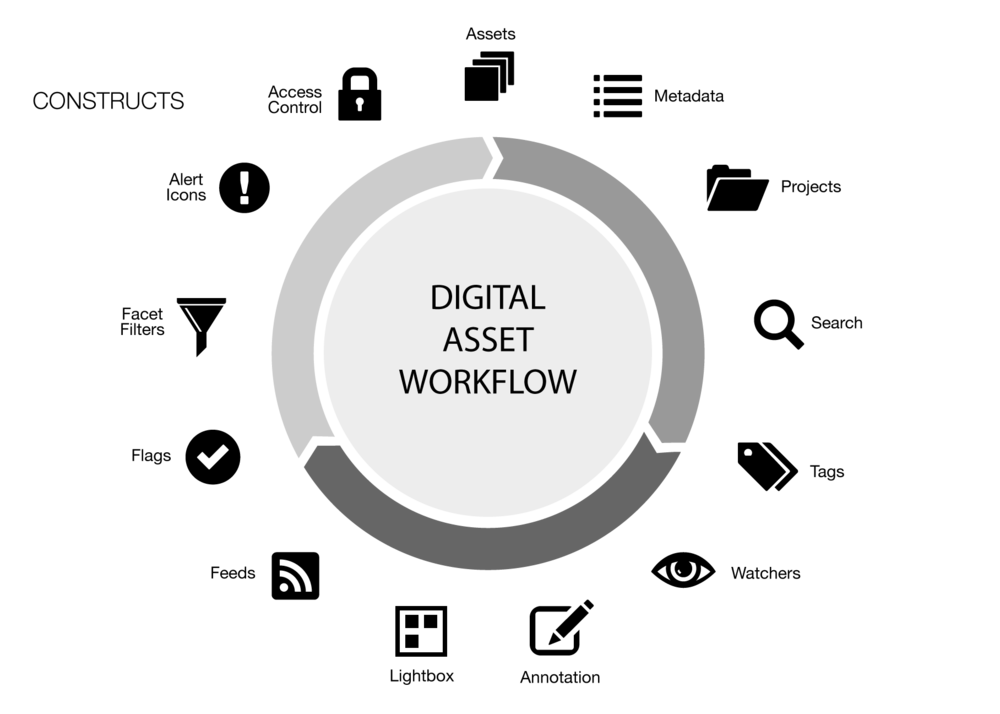
Creating a digital legacy
BT Portrait of the City is a project that we are inviting every citizen to get involved in, as we draw upon the power of the image to reflect the changes over time that have shaped our city, to convey the social experiences of communities, to unlock memories and reveal the moments in our lives that define who we.
Thousands of such images exist in family albums, in the archives of newspapers, libraries, museums and television companies, and in the personal collections of the amateur photographers and home movie-makers who have recorded the intimate lives of their communities over many decades. Behind every image is a story waiting to be told.
BT Portrait of a City aims to bring these images together into a single online platform that will act as a digital memory bank for the entire city.
We want every community and individual to be part of this memory bank – to leave a unique footprint that will be seen for generations to come. BT Portrait of a City will support communities to take an active role in recording their own histories, creating their own films, photographic exhibitions, e-books and apps that can be shared by everyone in the city and beyond.
This is a journey into the future as well as the past. Along the way there are new skills to be learned, new technologies to be acquired and a new generation to be inspired by the rich history all around them. Although we are only at the beginning of this journey, we are already grateful to the many organisations and individuals who have agreed to share their archives and personal collections and to work in partnership with us to tell the story of this city in all its myriad shades.
The online digital archive will leave an invaluable legacy for future generations.
BT Portrait of a City wins prestigious DANI award
One of the flagship projects in the UK City of Culture year, BT Portrait of a City, has won a prestigious DANI award. The project was voted Digital Culture Project of the Year at the 2103 Digital Advertising NI awards at a special ceremony in Derry-Londonderry.
“Connecting communities is at the heart of everything we do and that’s what made BT Portrait of a City a natural project for us, as principal partner, to get behind. The whole community can be proud of what they have achieved this year and this award is recognition of the worth and importance of the project to the city as a whole.”
Peter Morris, Director of Corporate Services, BT
Living archive prototype

Preserving identities
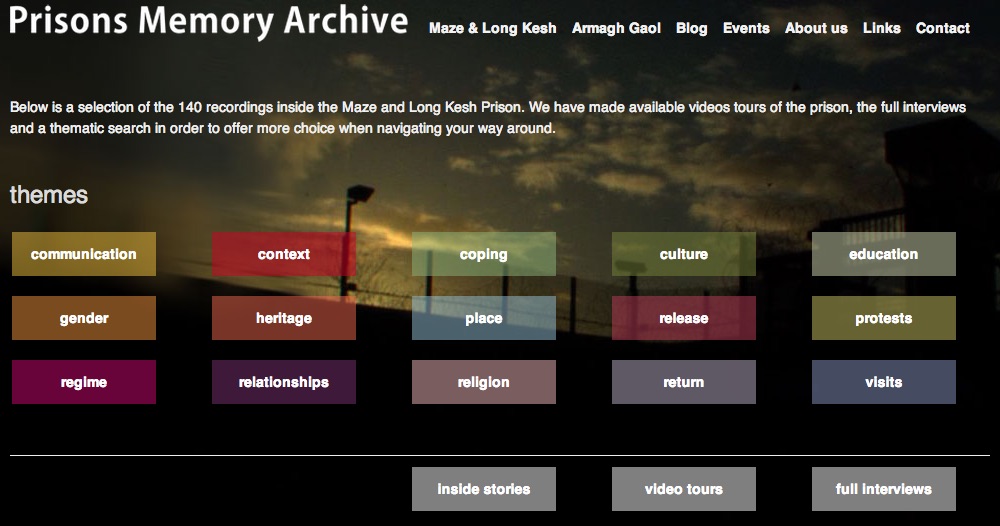
Protocols
Co-ownership
The PMA shares ownership of the recordings with the participants. This means that participants are involved at all stages of production and exhibition: they ultimately have the power of veto over material. This co-ownership approach generally contrasts with mainstream models of documentary filmmaking where the subjects relinquish ownership of recorded material to the production company or broadcaster. This ethical protocol is primarily intended to establish trust between participants and the PMA in a society emerging from violence where political and personal sensitivities remain tender.
Inclusivity
Where contestation over narratives from the past remains, it is important to hear and see the story from many perspectives. The PMA includes stories from as wide a range of constituencies as was possible during filming: prison staff, prisoners, visitors, educators and chaplains. This encourages viewers to regard others as ‘ourselves in other circumstances’ and to witness not only contrasts, but also parallels, in the participants’ experiences. While the material offers validation of each story and participant, at the same time it also challenges our assumptions about the past.
Important to understand that all players needs different communication, vocabulary, copyright and other requirements.

Content and activities
- Online magazine observing the fields of photography/ Proposing expertise
- Insights for target audiences (gathering relevant; monitor and evaluate – archive)
- Creating own context, providing a single place to bring audiences from dispersed, peripheral and social networks
- Educational, research exchange space / Re-evaluate importance for different academic, social and cultural institutions/ Contextualise collection for the schools´ curriculum/ ”Knowledge production” – promoting the use and re-use of collections and knowledge.
- Hub for professional photography/ Production and distribution of artistic and community photography
- Collections/ Artistic creations/ Community archives, workshop’s documentations blogs
- Collaborative projects with strategic partners/ Finding new collaborators and refreshing existing partnerships/ More cross – marketing opportunities with partners/ Aggregated feeds from partners
- Allowing a large number of people to contribute to and share, reducing repetitive duplicate input
- Commissioning/ Calls for proposals/ Awards etc
Goals:
To provide appropriate access.
Develop new grants opportunities and secure funding.
On-demand digital archive
Users can search, call up and/or order cultural heritage sources using various search functions.
Collaborative storytelling
Users can tell their own personal stories. Heritage institutions provide specific archive material that users can then integrate into their narrative.
Distributed online research
Technical platforms, tools and social networks where users can jointly conduct and present research. This guarantees a certain degree of reliability with regard to the information, the relationship between the sources and the members of the community. An example of this is wikipedia.org.
Social tagging
Users are given the facility of tagging digitised cultural heritage sources. The tags can contain a description or can express some appreciation, and they make the collection easier to search through.
Enhancing the offline experience
Users can take advantage of new media, either prior to and during their visits to the museums and cultural institutions. Using applications on smart phones in particular can make the museum visit more interactive and personal.
Online marketplace
This offers users the chance to bid online for cultural heritage objects and works of art.
Our Museum
Communities and Museums as Active Partners
What we are trying to achieve the Four Outcomes:
Rooted in local needs
Museums and galleries understand their role within their localities; they are effectively informed of and respond to, the range of their communities’ needs and values and are aware of and initiate opportunities for partnerships with communities and other sectors to meet local needs.
Community Agency
Communities are sustainably at the core of all the values, strategies, structures and work of museums and galleries: actively and regularly participating and collaborating in dialogue and decision-making about the work of the museum/gallery.
Capability building
Museums and galleries play an effective role in developing community skills, capabilities and creativity: preparing and helping people to be engaged in their communities, to articulate their voices, to find employment or volunteering opportunities in the heritage sector and elsewhere; and supporting staff to learn how to work with communities.
Reflection
Museums and galleries embed reflective practice into their work: internally, with community partners and across the sector, to ensure on-going reflection, dialogue and openness to challenge, alternative values and working methods.
Archive development report
Study on actual approaches in archival development. Case studies of similar archives.
Propose a model.
Propose selection of relevant archival and web publishing software.
Policies.
1. Consolidating local and regional archives network. Long-term goal.
Discover possibility of sharing common archival software, saving costs and minimising efforts.
BE representing the major hub/ interface for photography in Northern Ireland.
2. Realise the significance for the national and international archival institutions.
Apply for memberships. Get accreditations. Research topical or institutional funding trends.
Goal: Be compliant to the current standards.
Examples: Community Archives and Heritage Group, Collections Trust, Culture Grid, Archives and Records Association, Digital Preservation Coalition, Europeana
3. Re-evaluating importance for different academic, social and cultural institutions,
finding new collaborators and refreshing existing partnerships.
Goal: Provide appropriate access, develop new grants opportunities and secure funding.
Contextualise collection for the schools´ curriculum. Strategic partnerships.
4. SPECTRUM – standard defining best practice in management and use of collections.
5. Living archive. Propose a prototype.
Acquisition of new works and contributions of related content.
Archiving BE activities, collateral events, feedbacks and cross references between network sources.
Archive: Physical Collections / Digital Assets / Narrative Information / Collections-based knowledge/ Administrative information
Relational scheme, naming conventions, lexicon/vocabulary, annotation.

Belfast Exposed
From Source Photographic Review
The origin of Belfast Exposed dates back to 1983 when a group of local photographers came up with the idea for an exhibition to which people from across Belfast were invited to bring their photographs,to provide an ‘amateurs insight into the varying images of Belfast’(Brendan O’Reilly 1984). The response to this idea and to the eventual exhibition itself was so enthusiastic that it was taken not only to different venues within Belfast but was soon sent abroad. ‘It just snowballed from there.’…
The gallery space provided exhibition space both for local community groups and established photographers from within and outside of Belfast. Photographs taken by the photographers and by the participants of the workshops started to amass, adding to the corpus of images from which the initial exhibition had been formed and providing the foundation of an archive…
Like similar groups the activities of Belfast Exposed are diverse, encapsulating a variety of emphases that reflect the personal interests of the people involved, the needs of the local communities with which they work and the practical restrains of financial prudence. One major aspect of its activities is still the provision of workshops for local community groups. The groups themselves have become more knowledgeable about their own requirements and workshops themselves have to be more focused and accommodating to these demands, providing more than just basic photographic skills…
The archive has grown to include around half a million photographs. About one percent of this photographic wealth is currently being digitised and preparations are underway to make these available online…
The initial idea, to provide an alternative and ‘amateur view’ of life in Belfast, was not merely an attempt to provide a forum for ‘ordinary’ people, whose access to means of visual expression would have been severely limited…
This was additionally done within the context of the violent confrontations that have characterised much of the life in Northern Ireland for over one generation. One of the initial organisers recalls: ‘we were also conscious of the amount of censorship that was going on in the media portrayal of events happening here, that people weren’t given enough information’. The aim of Belfast Exposed was therefore twofold: on the one hand, it wanted to show the full extent of life taking place beyond the images provided by the mainstream media and on the other to document the Troubles themselves to a fuller extent…
…one weakness that I perceive in the digitised version of the archive: it is lacking the private photographs that people have brought in as part of community group projects and exhibitions and that have been copied and kept. The reason that they are not represented is certainly influenced by questions of copyright. However this absence emphasises the exclusively documentary character of the archive…
This seems to suggest an inherent belief in the explanatory power of the image, as it was initially expressed when Belfast Exposed came into being. ‘The camera is an extremely powerful medium of communication, a means of commenting without having to utter a single word.’ It is not. The image can evoke emotion, but it needs other forms of communication to convey meaning and to explain. When one speaks to anyone about a particular picture stories just seem to flow, but these stories are not included in the archive…
It is in this respect that Belfast Exposed differs significantly from other community photography groups. Unlike these the main emphasis of Belfast Exposed is not in the questioning of the mechanism of visual representation, a deconstruction or subversion, but in the documentation of the social world within established photographic norms. On a local level this might be different in the exhibitions that are organised by community groups or as part of a workshop. Here different forms of visual display seem to be experimented with, but these do not find themselves reflected in the archive itself…
Today Belfast Exposed’s object, the city itself, is no longer dominated by an exclusively bipartisan Troubles narrative. Finally the staffing of Belfast Exposed has changed allowing a reorientation of the organisation’s objectives and a reappraisal of its motives. The combination of these factors places a strong Belfast Exposed in the enviable position of being able to create an even more diverse stylistic and thematic portrait of Belfast and discover a future role for community photography in the city.
